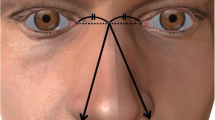Abstract
Differences in penis size or in the magnitude of change in penis size to full erection can be confounding factors in phallometric assessment of erotic preference. This paper reviews this issue and studies the effect of penis size and magnitude of change in penis size on decisions which might be made in the assessment and treatment of sex offenders. Various techniques for attempting to correct for individual differences are discussed, including the use of percentage of full erection scores, relative arousal scores, and ipsative z-scores. Two studies were undertaken to improve estimates of percentage of full erection scores. In one of these studies normative data on penile circumference in the flaccid state was used to predict full erection. In the other study, self measurements of penis size were used. Results indicated that predictions of full erection from flaccid state may be useful. Self measurements were not found to be useful. Suggestions are made which may minimize the effect of individual differences in penis size in phallometric assessment.
Similar content being viewed by others
References
Abel, G.G., Barlow, D.H., Blanchard, E.B., & Guild, D. (1977). The components of rapists' sexual arousal.Archives of General Psychiatry, 34, 895–903.
Barbaree, H.E. (1990). Stimulus control of sexual arousal: Its role in sexual assault. In Marshall, W., Laws, R., & Barbaree, H. (Eds.).Handbook of sexual assault: Issues, theories, and treatment of the offender. New York: Plenum Press.
Barbaree, H.E., & Mewhort, D.J.K. (1989). The effects of z score transformation of erectile responses in studies of stimulus control of sexual arousal. (Manuscript submitted for publication).
Carrera, M. (1981).Sex: The facts, the acts, and your feelings. New York: Crown Publishers, p. 220.
Davidson, P.R., & Malcolm, P.B. (1985). Reliability of the rape index: a rapist sample.Behavioral Assessment, 7, 283–292.
Davidson, P.R., & Malcolm, P.B., Lanthier, R.D., Barbaree, H.E., & Ho, T.P. (1981). Penile response measurements: Operating characteristics of the Parks Plethysmograph.Behavioral Assessment, 3, 137–143.
Earls, C.M., Quinsey, V.L., & Castonguay, L.G. (1987). A comparison of scoring methods in the measurement of penile circumference changes.Archives of Sexual Behavior, 6, 493–500.
Farkas, G.M., Evans, I.M., Sine, L.F., Eifert, G., Wittlieb, E., & Vogelmann-Sine, S. (1979). Reliability and validity of the mercury-in-rubber strain gauge measure of penile circumference.Behavioral Therapy, 10, 555–561.
Freund, K. (1967). Diagnosing homo or heterosexuality and erotic age-preference by means of a psychophysiological test.Behavioral Research Therapy, 5, 339–348.
Harris, G.T., Rice, M.E., Quinsey, V.L., Chaplin, T.C., Earls, C. (1991). Maximizing the discriminant validity of phallometric assessment data.Penetanguishene Mental Health Centre Research Report, 7, No. 2, Penetaguishene Mental Health Centre, Penetanguishene, Ontario.
Laws, D.R., & Osborn, C.A. (1983). How to build and operate a behavioral laboratory to evaluate and treat sexual deviance. In Greer, J.G., & Stuart, I.R.The sexual aggressor: Current perspectives on treatment. New York: Van Nostrand Reinhold.
Malcolm, P.B., Davidson, P., & Marshall, W.L. (1985). Control of penile tumescence: Effects of arousal level and stimulus content.Behavioral Research Therapy, 23, 273–280.
Marshall, W.L., & Barbaree, H.E. (1990). Outcome of comprehensive cognitive-behavioral tratment programs. In Marshall, W., Laws, R., & Barbaree, H. (Eds.).Handbook of sexual assault: Issues, theories, and treatment of the offender. New York: Plenum Press.
Marshall, W.L., & Eccles, A. (1991, in press). Issues in clinical practice with sex offenders.Journal of Interpersonal Violence, 6, 68–93.
Murphy, W.D., & Barbaree, H.E. (1988). Assessments of sexual offenders by measures of erectile response: psychometric properties and decision making. Kingston, Ontario: Queen's University, Unpublished manuscript.
Parks Medical Electronics, Inc. (1983).Operating manual Model 240 strain gage plethysmograph. Beaverton, Oregon.
Quinsey, V.L., & Chaplin, T.C. (1988). Penile responses of child molesters and normals to descriptions of encounters with children involving sex and violence.Journal of Interpersonal Violence, 3, 259–274.
Quinsey, V., & Chaplin, T.C., Carrigan, W.F. (1979). Sexual preferences among incestuous and non-incestuous child molesters.Behavioral Therapy, 10, 562–565.
Quinsey, V.L., Chaplin, T.C., & Varney, G. (1981). A comparison of rapists' and non-sex offenders' preferences for mutually consenting sex, rape, and physical abuse of women.Behavioral Assessment, 3, 127–135.
Quinsey, V.L., & Earls, C.M. (1990). The modification of sexual preferences. In Marshall, W., Laws, R., & Barbaree, H. (Eds.).Handbook of sexual assault: Issues, theories, and treatment of the offender. New York: Plenum Press.
Quinsey, V.L., Steinman, C.M., Bergersen, S.G., and Holmes, T.F. (1975). Penile circumference, skin conductance, and ranking responses of child molesters and "normals" to sexual and non-sexual stimuli.Behavioral Therapy, 6, 213–219.
Author information
Authors and Affiliations
Rights and permissions
About this article
Cite this article
Furr, K.D. Penis size and magnitude of erectile change as spurious factors in estimating sexual arousal. Annals of Sex Research 4, 265–279 (1991). https://doi.org/10.1007/BF00850057
Issue Date:
DOI: https://doi.org/10.1007/BF00850057




